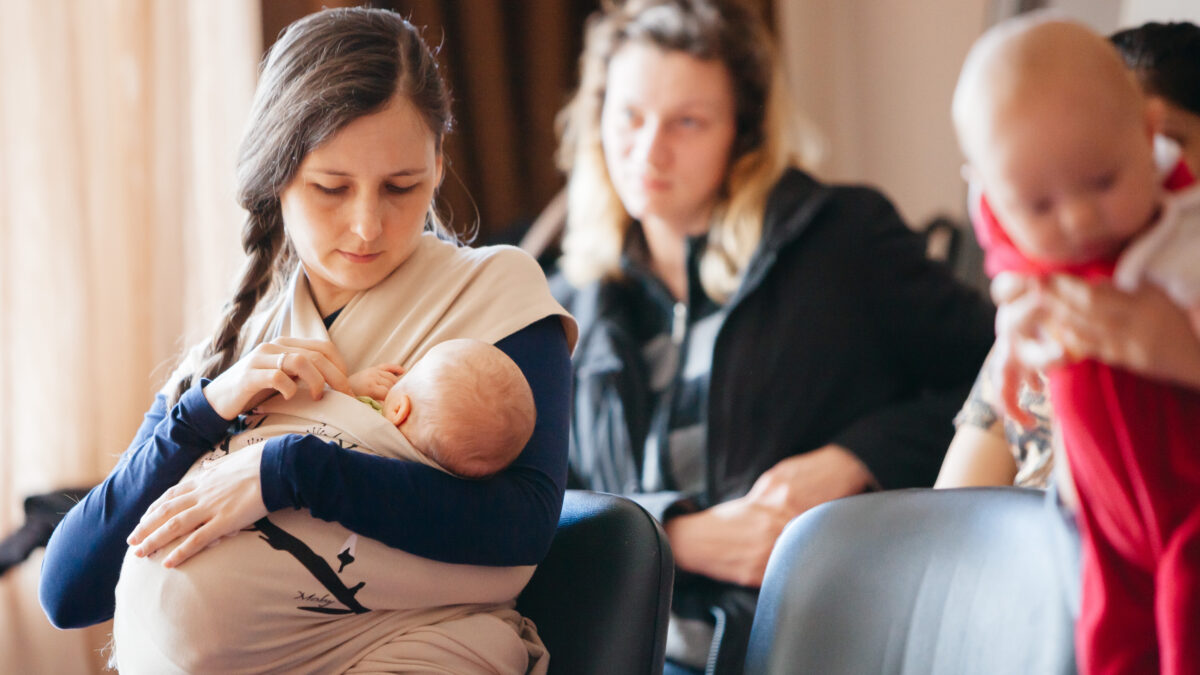
In “Murder Must Advertise,” a Dorothy Sayers mystery novel from 1933, the aristocratic sleuth Lord Peter Wimsey goes undercover in an advertising firm. The narrator tells us, “He had never realized the enormous commercial importance of the comparatively poor. Not on the wealthy, who buy only what they want when they want it, was the vast superstructure of industry founded and built up, but on those who, aching for a luxury beyond their reach and for a leisure for ever denied them, could be bullied or wheedled into spending their few hardly won shillings on whatever might give them, if only for a moment, a leisured and luxurious illusion.”
The advertising of our decade is very similar: products are advertised not as shirts, cereal, or face lotion, but as “something to make you look thin,” “something to help your kids get good grades in school,” and “something to make you look like Jennifer Lawrence.” The items with which we fill our shopping carts are as much ideas, fantasies, and forlorn hopes as they are food and raiment. Advertising is manipulative, but in its own limited way, it also reveals the yearnings of the American heart.
How fascinating it is that the instinctive desires and feelings thus revealed are often in direct contradiction to the progressive ideals which we espouse publicly. For instance, we live in a society where it is quite common to declare that gender is a meaningless cultural construct. No one should be able to say that a man ought not to do feminine things, or a woman to do masculine things. Some would even claim that no one has the right to claim they “know” a particular child to be male or female, and that physical sex is a mere, random, irrelevant accident of biology that can be overcome with brave new technology. A few others have tried to raise their children “gender-neutral” by keeping the little one’s sex a secret. Others use legislation in an attempt to eradicate gendered sports or even gendered bathrooms. However, as I discovered when my husband and I decided not to find out the sex of our first child until his birth, all the baby gear is gendered.
Just Shop for Baby Gear
The vast majority of infant clothes, especially those retailed in the price point of the “comparative poor,” come exclusively in pink or blue (what is wrong with red, orange, yellow, green, or multi-colored stripes?). The baby tubs have a pink rim or a blue rim (as do the little potty seats), the baby towels are decorated with trucks for boys or flowers for girls, the little shoes are ballet flats or boyish sneakers—even the car seats and playpens are color-coded. So, too, are Duplo sets and other toys. If an alien landed in the baby section at Target, he might conclude that the biggest fear of American parents is that someone might not know the sex of their child from 50 feet away.
This obsessive focus on pink and blue is a modern phenomenon. After all, baby boys used to wear dresses, and the sex of small children is difficult to distinguish when looking at old family portraits from before the twentieth century. We might blame marketers for realizing that gendered merchandise encourages parents to buy twice as much stuff (since hand-me-downs between brothers and sisters are no longer as palatable), but we cannot blame marketers alone for the willingness with which modern parents buy color-coded babyware. It is as if modern Americans, accepting as they are of the idea that gender in the abstract should not shape or limit identity, also feel a deep compulsion to emphasize the sex of their particular, concrete progeny. One is reminded of Isaac Newton’s third law of motion, “For every action, there is an equal and opposite reaction.”
We Say One Thing about Marriage, and Shop Another
Why do we buy pink bathtubs? For the same reason, I think, as we collectively break the bank for strapless wedding gowns even though more inexpensive weddings correlate with happier marriages. One would think that weddings would have faded into insignificance by now. The line, “We thought about getting married, but after all, it’s just a piece of paper,” is a cliché. Public acceptance of cohabitation and out-of-wedlock birth makes a wedding license mere icing on the lifestyle cake for many couples. Those who do wed are under no legal obligation to keep their vows. A few years ago, lawmakers in Mexico debated the idea of introducing temporary, renewable marriages that would save couples from the bother of divorce. In an attempt to take the opposite tack, three U.S. states allow couples to choose “covenant marriage” (surely a redundant term), a union from which they theoretically cannot secure no-fault divorce. The existence of this option is quite a commentary on the impermanence of regular marriage licenses.
Nor are we clear on whom should be allowed to marry. At the moment, we seem to believe that marriage is simply the legal union of any two adult people who love each other romantically. However, it also seems possible that we will continue to expand that definition (it’s not just that television fare like TLC’s “Sister Wives” puts a positive spin on polygyny—a Gallup poll found that public acceptance of polygamy doubled between 2003 and 2013). There are some who would like to equalize the rights of our nation of individuals by “minimizing” marriage altogether, so that singles are not discriminated against. Even among more moderate and traditional circles, women are strongly discouraged from declaring that their dream in life is to find a man or that their personal fulfillment comes from acquiring a husband.
Yet Netflix is awash in consumerist, wedding-themed reality shows that nurture obsession with white tulle. “My Fair Wedding” is based on the premise that women deserve the elaborate day (complete with ornate decorations, designer attire, upscale catering, and other elegancies) that they cannot afford. TLC’s “Say Yes to the Dress,” devoured by more than one-and-a-half million viewers when the eleventh season premiered in February of this year, follows brides-to-be while they try on incredibly expensive designer gowns and the sales staff say things like, “This is probably the most important garment you will ever wear.” Even though such shows are the target of satire, one writer has suggested that viewers like them because, unlike many other reality shows, “No cynicism spoils this collective pursuit of happiness.”
Groom-Optional Weddings
How strange that we cling to this symbolism of wedding-as-happily-ever-after. Yet cling we do, and sometimes in surprising ways. This September, a single mother suffering from incurable cancer “finally got to experience the day she has dreamed about since she was a little girl.” Thanks to generous donations, she selected a beautiful wedding dress. Her venue was a castle. Her flowers were lovely. However, the event in question was not a wedding and there was no groom. Instead, it was a wedding-themed photo shoot intended to provide her sons with keepsakes for the future. She is not the only woman to use the imagery of a wedding as a symbol of love, hope, and affirmation.
Earlier this year, Lindsay Morris, a photographer who is known for her work documenting a camp for “gender nonconforming boys” photographed an event she called “Ricchina’s wedding.” The lovely, 25-year-old woman who wore a white wedding gown and went through all the motions of a wedding reception (complete with a bridal garter) has Down syndrome. She has been asking her mother why she cannot get married, and so her mother threw her a wedding-themed birthday party. Ricchina has now been able to experience the thrill of being the white-clad princess of the day.
To criticize either of these celebrations feels cold-hearted. After all, it is not as if they were as extreme as Chen Weh-Yih, a Taiwanese woman long pressured by her mother to marry, who in 2010 decided to simply wed herself, and went solo to Australia for a honeymoon, or Nadine Schweigert, who made her vows to her own “inner groom” in 2012 as part of her recovery from a painful divorce and the loss of her family when her children chose to live with their father (believing in the importance of self-love as an antidote to despair, she apparently takes herself out on date nights in order to nurture her relationship with herself). However, all of these events illustrate that, for at least some women, the dream of being a bride is not the same thing as the dream of being married. That is, the idea of a wedding has somehow outlasted adherence to historical concepts of marriage.
That phenomenon might seem to illustrate merely the triumph of ultimate, narcissistic individualism and the end of marriage customs that once provided security to women and children. However, it is also something bigger. It is a testament to the incredible power of an idea that has somehow, in some fractured way, survived both ideological dismemberment (at the hands of liberal reformers and social media) and commercialization (at the hands of marketers and the machine of industry).
Our Myths Proclaim Great Ideas
In a poem entitled, “The Myth of Arthur,” G.K. Chesterton chastises “learned men” who “chase myths like moths, and fight them with a pin,” deducing “from tall tales that men were never tall.” He asks,
Say, have you thought what manner of man it is
Of whom men say ‘He could strike giants down’?
Or what strong memories over time’s abyss
Bore up the pomp of Camelot and the crown.
And why one banner all the background fills,
Beyond the pageants of so many spears,
And by what witchery in the western hills
A throne stands empty for a thousand years.
The myth of Arthur could not have existed unless someone truly great stood behind it. In the same way, the endless aisles of baby gear and wedding finery show that the idea behind them is gargantuan. We might ask ourselves what manner of idea it is that still continues to inspire, even when turned into a commercial mass of hot pink baby tights and tiny football jerseys, or even a rack of designer wedding gowns. When the “comparative poor” go shopping, they are bearing testament to the idea that, even if they themselves no longer realize it, the social order provided by gender distinctions and committed marriage is a powerful, primal thing.
Both gender distinctions and historic, life-long marriage are often decried as machinations for oppression. After all, how can anyone be free if he or she is defined by something other than his or her personal inclinations? Yet when expectant parents fill their cart with tiny blue onesies, or when young women dream their way through the pages of a bridal fashion magazine, they reveal that some part of their psyche sees security, love, and happiness in the very outlook that they officially decry. Those of us who like being men, women, husbands, wives, and other old-fashioned and liberating categories can take comfort from this. There is still hope that we can convince our fellow citizens to liberate themselves from a movement that would strip them of their pink baby tubs.









